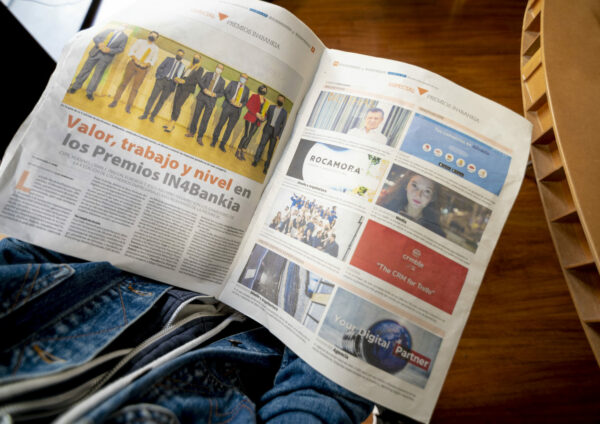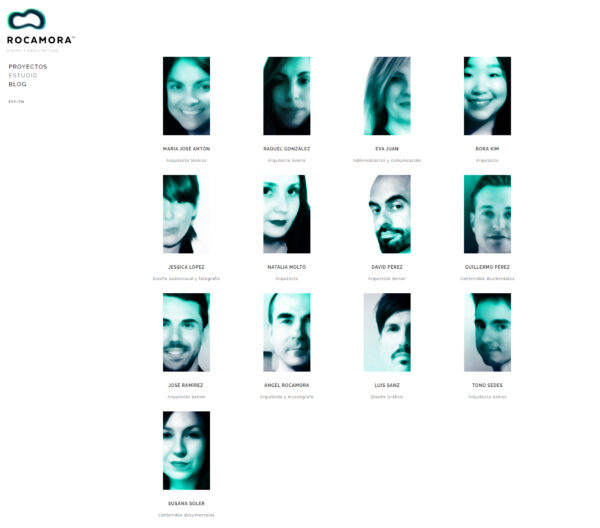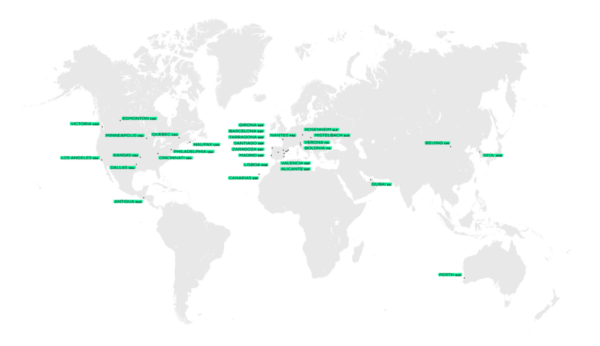The IN4BANKIA awards have just been published and our studio Rocamora design and architecture has been finalist in two of the categories: Best SME 2020 and best exporting company. In an uncertain landscape, where the impact of covid has been overwhelmingly felt in all economic sectors, this year’s award is more significant than ever.

Rocamora Diseño y Arquitectura, S.L.P. is a company that has specialized in the development of “narrative architectures”, in architectures that tell stories through heritage.
For the last half decade we have specialized in museographic projects and the enhancement of historical and cultural heritage.
In our beginnings, in 2009, we faced the crisis as a challenge to reinvent the classic concept of the studio by redrawing a new workspace, in a local, with shop windows, on an urban corner, at street level, so that people could see us and know we existed.
We began to design and define the concept of the studio, an architectural firm originally formed by two people, which grew by carrying out new projects that almost did not exist in the architectural sector: “museographic projects”.The company has consolidated its position in this new sector as a market reference within the network of provincial museums, and with a new international line at the moment.
Eleven years later, in 2020, it has meant a new stopping point and momentum: a major change for us.
Within the framework of COVID-19, on March 16 (the day we were confined nationwide), the company literally added 5 more people to the team. Half a year later, we have maintained the usual staff and we have consolidated those who joined us, increasing to ten people with a constant rhythm of work and project development, and facing the situation as a unit, with faith that all this will happen, and relying on the work we now have on the table, without looking anywhere else than the fixation to move forward…

The added value of Rocamora Diseño y Arquitectura within the sector is our dedication to the service and realization of integral design: direction and design of basic and execution projects, coordination of audiovisual and multimedia, brand design-corporate identity, innovation and technology in the field of tourism, accessibility and management and project consulting. All this from a communicative, permeable and accessible design, with contemporary codes.
At this moment 85% of our business is:
– Museographic and exhibition design.
– Integral museum projects.
– Complete design of installations and museographic support.
– Audiovisual and multimedia coordination.
– Curatorship and management of the museographic project.
– Development and design of signage, lighting and accessibility and inclusion elements.
– Development of 360º visitable projects.
– Development of specific didactic workshops adapted to heritage.
All the tools that are effective as technical material to incorporate into the project are being worked on effectively, intensively and successfully. This allows us to create modern museographies that are coherent with the technological situation and with the parameters of total inclusiveness.
The main stimulus of our projects is based on creating museum spaces and museographies that go beyond the merely expository, building immersive architectures that provoke sensations and allow the experience from a series of elements that serve as springs that, forming a harmonized whole with the building, the heritage, the technical contents and the environment, activate the senses of the visitors.
We work on specificity, differentiating design and architecture associated with heritage and musealization independently of execution.
We defend the project, the freedom of design and the defense of what we have designed.
The full and powerful result of this independence supports us and is the consequence of coherently separating who designs and who builds (we only design) in a market that is still confusing, which is hard for us to defend, but which we are sure is the future for better results.
The formula for the success of our team consists of hiring collaborators with personality and critical capacity, with professional and artistic skills that allow them to develop a long-term relationship with the company. Skills are as important as being able to develop them in a team and having an interest in continuous training in relation to the specific performance and work of the studio as a whole.
The internationalization, from Spain, we have started working as partners of companies that are already working and developing projects outside our country. We are currently developing a collaboration project with a company from Elche to enter the Algerian market, with clear objectives and contacts.
The international clients we have worked with are:
In Europe, the Museu de Marinha de Lisboa, the Museu Nacional de Arqueologia de Lisboa, the MAMUZ Museum of Mistelbach in Austria and the Nationalmuseet in Denmark.
In the USA: The Franklin Institute of Philadelphia and the Cincinnati Museum Center.
In Canada: the Royal BC Museum in Victoria, the Royal Alberta Museum in Edmonton and the Musée de la Civilisation de Québec.
In Central America: the Ruta Maya Foundation, the National Museum of Archaeology and Ethnology MUNAE and the Colonial Art Museum of La Antigua in Guatemala.
In Australia: the Western Australian Museum in Perth.
 From an architectural office, from the intimate relationship of the creation of new spaces and the heritage contained in them, which has to consider the historical memory of each of the places, makes our platform as a Spanish studio, working from here, is a spectacular luck to be able to offer the profession and the trade through the design of “narrative architectures” and that the one who ends up being our client feels proud of them, thinks that he has been understood and that they represent him with seriousness and contemporary communication. And in the same way, it is stimulating for those who visit our “narrative architectures” to feel the emotion of what is being told and offered.
From an architectural office, from the intimate relationship of the creation of new spaces and the heritage contained in them, which has to consider the historical memory of each of the places, makes our platform as a Spanish studio, working from here, is a spectacular luck to be able to offer the profession and the trade through the design of “narrative architectures” and that the one who ends up being our client feels proud of them, thinks that he has been understood and that they represent him with seriousness and contemporary communication. And in the same way, it is stimulating for those who visit our “narrative architectures” to feel the emotion of what is being told and offered.
We are proud to be able to realize architectures in other countries that know how to adapt to the place where they will be located and that are intimately related to it.
